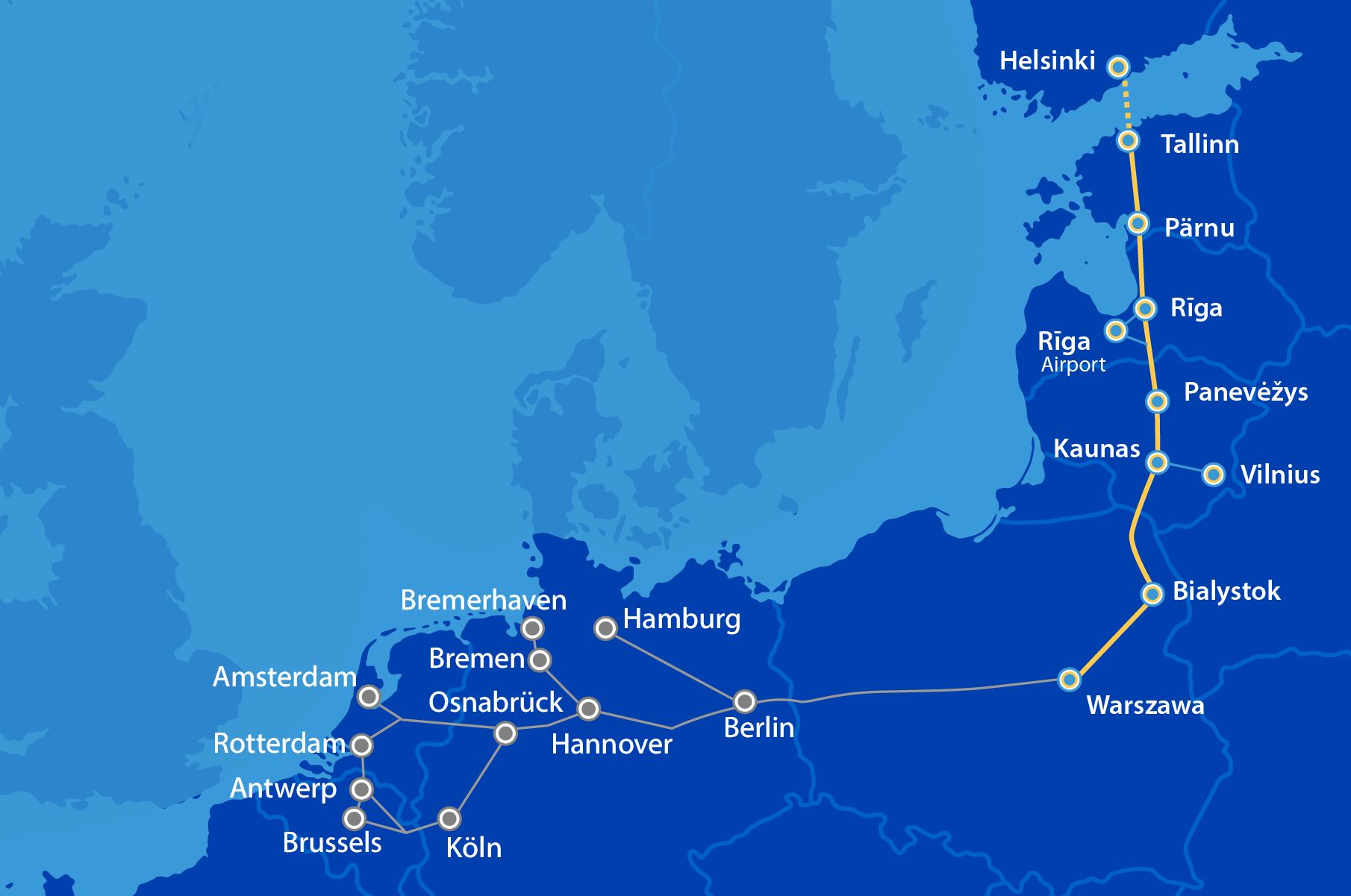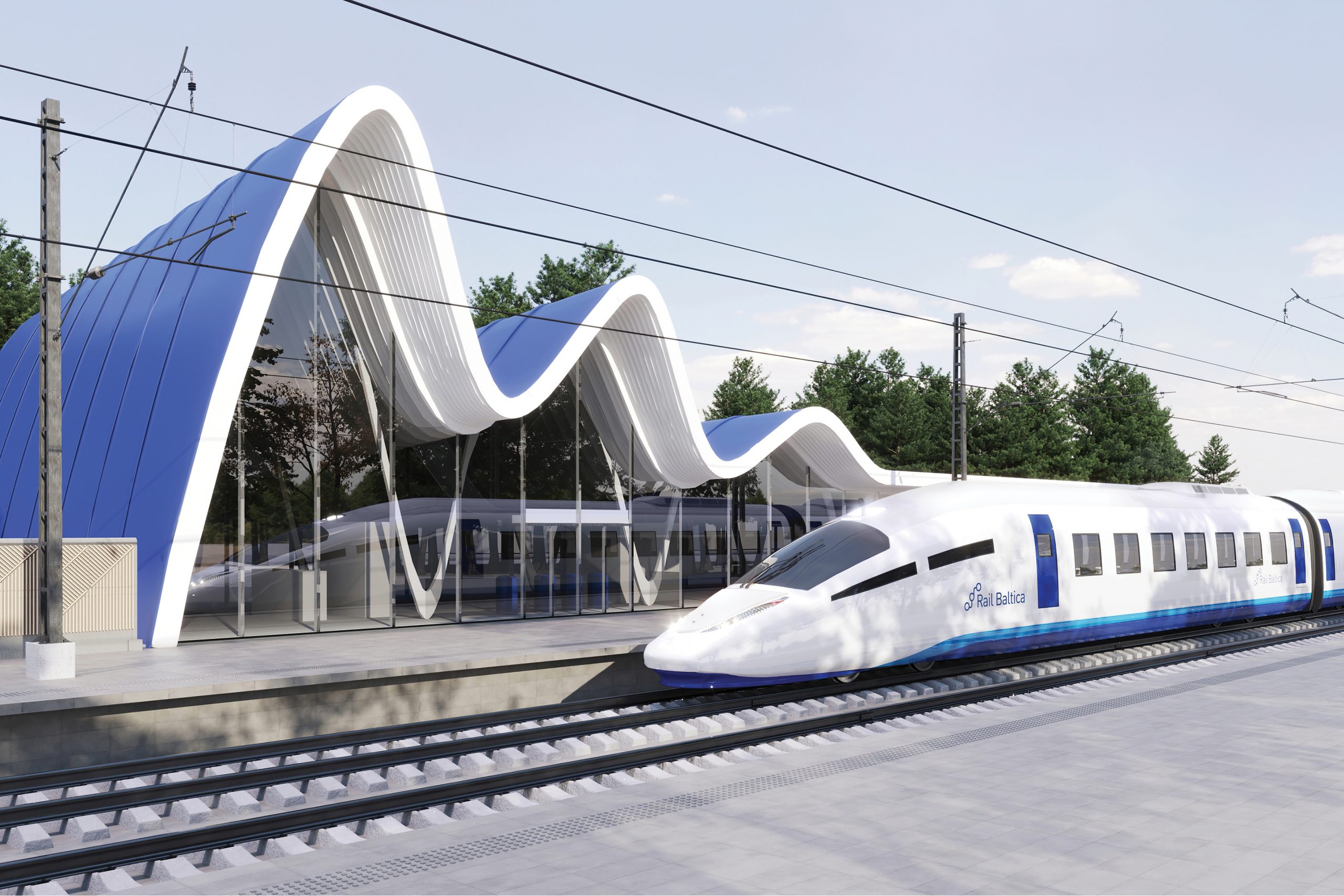Updated 15th August 2025 – Rail Baltica has taken a significant step forward with a €38.3 million contract awarded to DB Engineering & Consulting, a Deutsche Bahn subsidiary, for designing a 96-kilometer stretch between Kaunas and the Polish border. The agreement, signed by RB Rail and Lithuanian infrastructure operator LTG Infra, covers project documentation and technical supervision for an electrified double-track line running through Marijampolė and ending at Kaunas’ Jesia station.
This section is a key link in integrating Lithuania into the broader international transport corridor. While most of Poland’s Rail Baltica infrastructure is already modernized, the Lithuanian connection remains in the design stage. Coordinated planning is expected to reduce potential delays and ensure smooth cross-border integration.
Once built, the route will strengthen transport ties between the Baltic States and Central Europe. This will boost passenger and freight volumes and enhancing regional competitiveness. LTG Group plans to launch a tender for construction works soon, opening opportunities for contractors and investors.
By the end of 2025, nearly half of Rail Baltica will be ready for or undergoing construction, keeping pace with project timelines. Completion of the Kaunas–Polish border section will accelerate the North Sea–Baltic Sea corridor, offering new logistics routes and strategic advantages for the region.
May 2024 – The foundation stone for the US$4 billion (3.7 billion euro) Rail Baltica high-speed line has officially been laid in Latvia. Budimex, Polish construction subsidiary of Ferrovial, together with its partners withing the ERB Rail joint venture took part in a ceremony in Riga, Latvia. The project is a major investment from the Baltic counties to boost railway interconnections. Countries involved in the project include France, Italy, Lithuania, Estonia, Poland and Latvia. Interestingly, during the groundbreaking ceremony, a time capsule was buried at the initial site. Officials stated that it is meant to symbolize their commitment to future generations. Representatives from the European Commission were also present at the event.

Rail Baltica Length
Rail Baltica will cover 220 kilometers. The project involves 175 engineering structures and 11 wildlife crossings. Moreover, there wil be 42 viaducts, 81 road bridges, and 32 rail bridges. The first part of construction is taking pace in the Bauska region of Latvia. This is where Rail Baltica’s maintenance center is situated. It will also serve as the base from which the main line is built. The maintenance center will cover an area of approximately 16.5 hectares. It will facilitate the construction of connections to the existing 1520 mm track network. It will also maximize the use of the railway for transporting construction materials and machinery.
The high-speed rail project is aimed at being a key driver for the development of transportation in the Baltic region. The line will boost economic growth and social cohesion in the area in addition to improving the connectivity in Europe. Interim Chairperson of the Management Board of RB Rail AS Marko Kivila, stated that over 150 kilometers of rail will be under construction this year.
Also Read: US$3 billion Hafeet Rail between UAE and Oman greenlit for construction
Rail Baltica Speed
With a design speed of 249 km/h, Rail Baltica will significantly reduce travel times between the Baltic States and major European cities. It will serve as a modern infrastructure for passenger, freight, and military mobility, promoting accessibility and facilitating business, tourism, and cultural exchange. Furthermore, the double track will be fully electrified, with a standard gauge of 1435 mm. To meet European standards, the railway will be equipped with ERTMS (European Rail Traffic Management System).

Through the Connecting Europe Facility is a European Union program that is aimed at eliminating mobility and improving cross-border connections. The program has funded 85% of the project’s costs which underlines the strategic importance of Rail Baltica for the Baltic region and for European connectivity in general. Additionally, the program promotes the interoperability of transport systems. This will facilitate the development of an efficient, integrated transport network throughout Europe.
Officials are making efforts to stay within budgetary limits and meet the EU’s expectations. In order to do this, three countries may have to make amendments to the original plan. This may involve reducing maximum speeds, delaying a connection to Riga, and bypassing Vilnius
Project Team
ERB Rail consortium, the project team, consists of 3 companies. These are Budimex S.A., Eiffage Génie Civil SAS, and Rizzani de Eccher S.p.A.
Also Read: Construction Commences on the Mega $17 Billion Iron Ore Rail-and-Port Scheme in Guinea
“As part of the ERB Rail consortium, we are making a strategic investment for our entire region and will be responsible for the construction of the civil engineering and track. It is an honor to be chosen to build Rail Baltica, and it is also a challenge, given the scope of the project,” said Artur Popko, general manager and chairman of Budimex’s Management Committee. Budimex, a subsidiary of Ferrovial, controls 30% of the consortium.
“This project’s greatest challenge will be integrating the various organizations and cultures in a common project with the highest standards of safety and quality,” said Jaime Rontome Pérez, member of the ERB Rail Management Committee. He went on to say that he believes the participation of companies with extensive experience in rail projects, such as the Warsaw West Station in Poland and the Brittany–Pays de la Loire line in France, “guarantees success and responsible construction, but it is also a great challenge for all the partners”.

